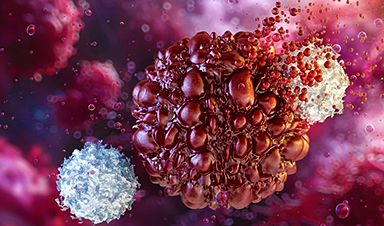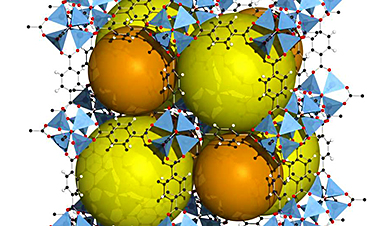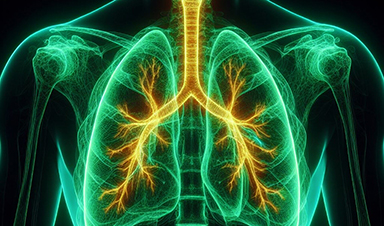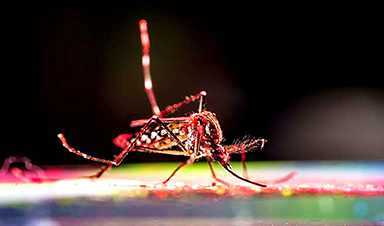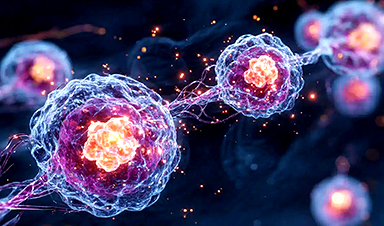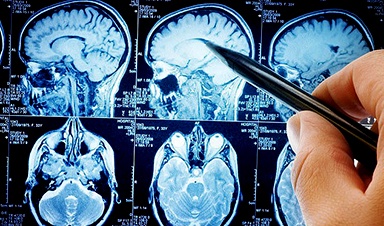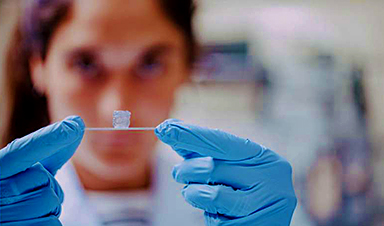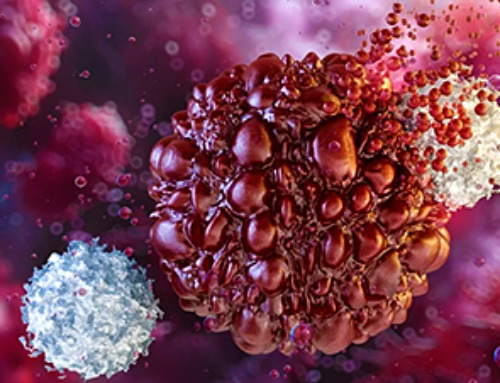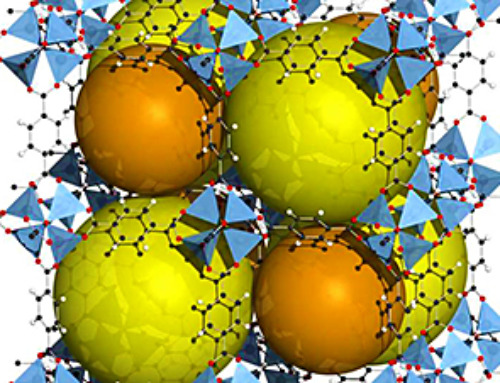New research explores the adaptation strategies of polyploid plants, offering insights for cancer treatment and enhancing crop resilience against environmental challenges.
Whole genome duplication (WGD) occurs across all kingdoms of life. While it is most prevalent in plants, it also takes place in certain highly aggressive cancers. Following WGD, a cell acquires additional sets of genomes and is referred to as polyploid.
Most of our major crops are also polyploid, including, wheat, apples, bananas, oats, strawberries, sugar, and brassicas like broccoli and cauliflower. Polyploidy also occurs in some of the most aggressive gliomas (a brain cancer) and is associated with cancer progression. In general, polyploidy has been associated with robustness (as in crops) and adaptation to the environment (as in cancers that metastasize).
Because polyploids have more genomes to manage, the doubling of these genomes can be a weakness, so it is important to understand what factors stabilize young polyploids and how genome-doubled populations evolve.
In this new study, published in Cell Reports, experts from the University of Nottingham's School of Life Sciences look at how three successfully polyploid plant species evolved to manage the extra DNA and whether they each did this differently or all the same way.
Research Insights from Polyploids
Professor Levi Yant, who led the study said: "Understanding the range of issues that face polyploids may help us to understand why some succeed while others don't. We see that successful polyploids overcome specific issues with DNA management and we focus on exactly what their 'natural solutions' are.
"In our study, we looked at three instances where species have adapted to 'polyploid life' and not only survived, but even thrived. Then we looked at whether they used the same molecular solutions to survive. Surprisingly, they did not."
The researchers found that the clearest signal of rapid adaptation to the polyploid state came from the CENP-E molecule, which is an exact molecule that other groups recently found to be an Achilles heel for polypoid cancers, and is a promising therapeutic target to kill the cancers. The next clearest signal came from 'meiosis genes', which Professor Yant notes are turned on in many cancers, whereas they are turned off in nearly all normal cells.
Implications for Cancer Research and Agriculture
"We discovered signals of rapid adaptation to the WGD state in the same molecular networks, and in the case of CENP-E, the exact molecule that is specifically important to polyploid cancers," continues Professor Yant.
"This WGD gives cancer a short-term advantage over most therapies, but targeting that exact molecule, CENP-E, specifically kills the polyploid cancer. This is a striking example of evolutionary repetition (or convergence) from completely different directions, but to the same adaptive hurdle. We can now take this model that adapts well to polyploidy and that can inform our thinking about certain types of cancer."
The findings of the study could impact in better understanding of how certain polyploid cancers, such as gliomas (brain cancers) are able to use polyploidy to progress, and what molecules can be targeted as part of any therapy to 'kill' the cancer cells.
More broadly, the study is important evidence that shows that mining evolutionary biology for these natural solutions can inform future therapies. Finally, the study also illustrates different ways in the future that we can better engineer our many polyploid crops to be more resilient to certain cataclysmic events – such as climate change.
Reference: "Kinetochore and ionomic adaptation to whole-genome duplication in Cochlearia shows evolutionary convergence in three autopolyploids" by Sian M. Bray, Tuomas Hämälä, Min Zhou, Silvia Busoms, Sina Fischer, Stuart D. Desjardins, Terezie Mandáková, Chris Moore, Thomas C. Mathers, Laura Cowan, Patrick Monnahan, Jordan Koch, Eva M. Wolf, Martin A. Lysak, Filip Kolar, James D. Higgins, Marcus A. Koch and Levi Yant, 7 August 2024, Cell Reports.
DOI: 10.1016/j.celrep.2024.114576
The study was funded by the European Research Council, BBSRC, and the Leverhulme Trust.
News
Study Delivers Cancer Drugs Directly to the Tumor Nucleus
A new peptide-based nanotube treatment sneaks chemo into drug-resistant cancer cells, providing a unique workaround to one of oncology’s toughest hurdles. CiQUS researchers have developed a novel molecular strategy that allows a chemotherapy drug to [...]
Scientists Begin $14.2 Million Project To Decode the Body’s “Hidden Sixth Sense”
An NIH-supported initiative seeks to unravel how the nervous system tracks and regulates the body’s internal organs. How does your brain recognize when it’s time to take a breath, when your blood pressure has [...]
Scientists Discover a New Form of Ice That Shouldn’t Exist
Researchers at the European XFEL and DESY are investigating unusual forms of ice that can exist at room temperature when subjected to extreme pressure. Ice comes in many forms, even when made of nothing but water [...]
Nobel-winning, tiny ‘sponge crystals’ with an astonishing amount of inner space
The 2025 Nobel Prize in chemistry was awarded to Richard Robson, Susumu Kitagawa and Omar Yaghi on Oct. 8, 2025, for the development of metal-organic frameworks, or MOFs, which are tunable crystal structures with extremely [...]
Harnessing Green-Synthesized Nanoparticles for Water Purification
A new review reveals how plant- and microbe-derived nanoparticles can power next-gen water disinfection, delivering cleaner, safer water without the environmental cost of traditional treatments. A recent review published in Nanomaterials highlights the potential of green-synthesized nanomaterials (GSNMs) in [...]
Brainstem damage found to be behind long-lasting effects of severe Covid-19
Damage to the brainstem - the brain's 'control center' - is behind long-lasting physical and psychiatric effects of severe Covid-19 infection, a study suggests. Using ultra-high-resolution scanners that can see the living brain in [...]
CT scan changes over one year predict outcomes in fibrotic lung disease
Researchers at National Jewish Health have shown that subtle increases in lung scarring, detected by an artificial intelligence-based tool on CT scans taken one year apart, are associated with disease progression and survival in [...]
AI Spots Hidden Signs of Disease Before Symptoms Appear
Researchers suggest that examining the inner workings of cells more closely could help physicians detect diseases earlier and more accurately match patients with effective therapies. Researchers at McGill University have created an artificial intelligence tool capable of uncovering [...]
Breakthrough Blood Test Detects Head and Neck Cancer up to 10 Years Before Symptoms
Mass General Brigham’s HPV-DeepSeek test enables much earlier cancer detection through a blood sample, creating a new opportunity for screening HPV-related head and neck cancers. Human papillomavirus (HPV) is responsible for about 70% of [...]
Study of 86 chikungunya outbreaks reveals unpredictability in size and severity
The symptoms come on quickly—acute fever, followed by debilitating joint pain that can last for months. Though rarely fatal, the chikungunya virus, a mosquito-borne illness, can be particularly severe for high-risk individuals, including newborns and older [...]
Tiny Fat Messengers May Link Obesity to Alzheimer’s Plaque Buildup
Summary: A groundbreaking study reveals how obesity may drive Alzheimer’s disease through tiny messengers called extracellular vesicles released from fat tissue. These vesicles carry lipids that alter how quickly amyloid-β plaques form, a hallmark of [...]
Ozone exposure weakens lung function and reshapes the oral microbiome
Scientists reveal that short-term ozone inhalation doesn’t just harm the lungs; it reshapes the microbes in your mouth, with men facing the greatest risks. Ozone is a toxic environmental pollutant with wide-ranging effects on [...]
New study reveals molecular basis of Long COVID brain fog
Even though many years have passed since the start of the COVID-19 pandemic, the effects of infection with SARS-CoV-2 are not completely understood. This is especially true for Long COVID, a chronic condition that [...]
Scientists make huge Parkinson’s breakthrough as they discover ‘protein trigger’
Scientists have, for the first time, directly visualised the protein clusters in the brain believed to trigger Parkinson's disease, bringing them one step closer to potential treatments. Parkinson's is a progressive incurable neurological disorder [...]
Alpha amino acids’ stability may explain their role as early life’s protein building blocks
A new study from the Hebrew University of Jerusalem published in the Proceedings of the National Academy of Sciences sheds light on one of life's greatest mysteries: why biology is based on a very specific set [...]
3D bioprinting advances enable creation of artificial blood vessels with layered structures
To explore possible treatments for various diseases, either animal models or human cell cultures are usually used first; however, animal models do not always mimic human diseases well, and cultures are far removed [...]

